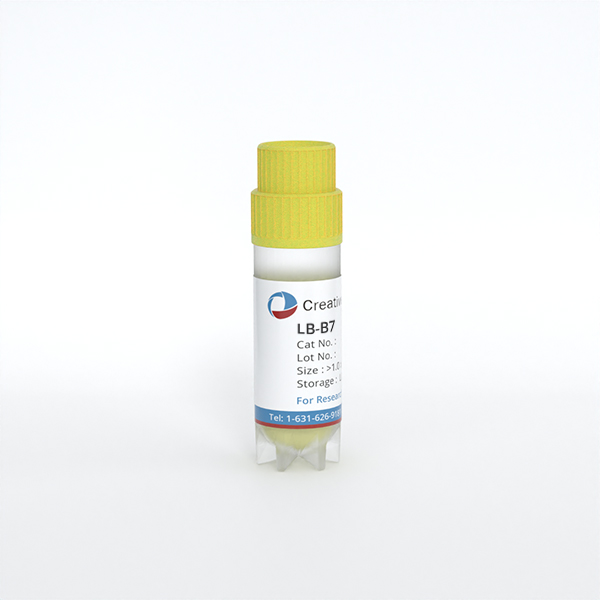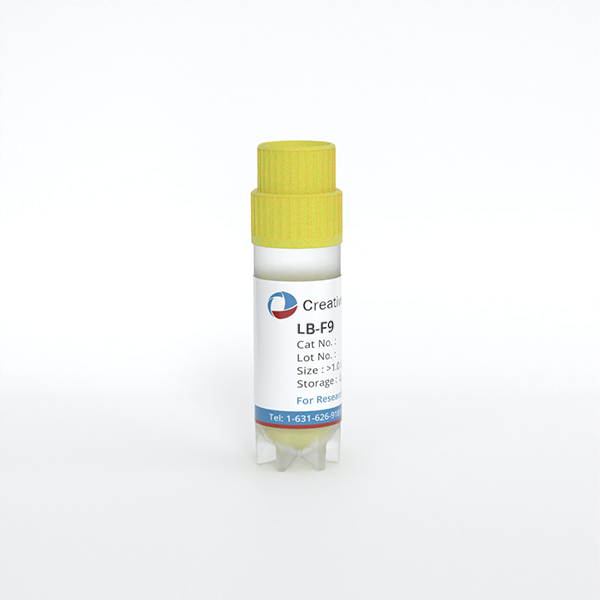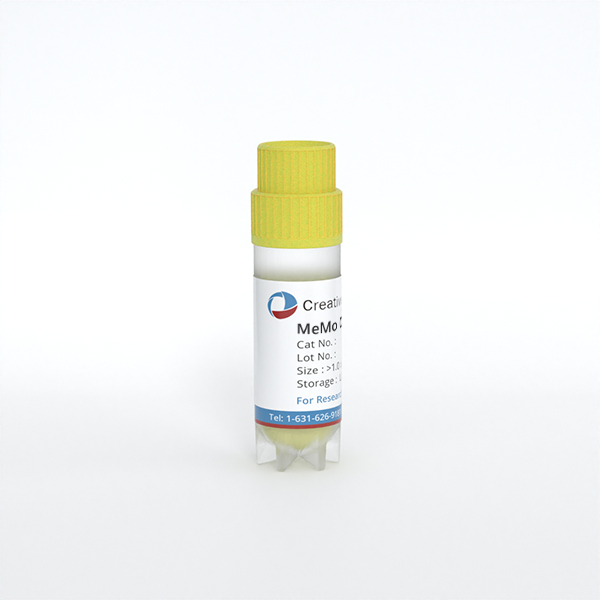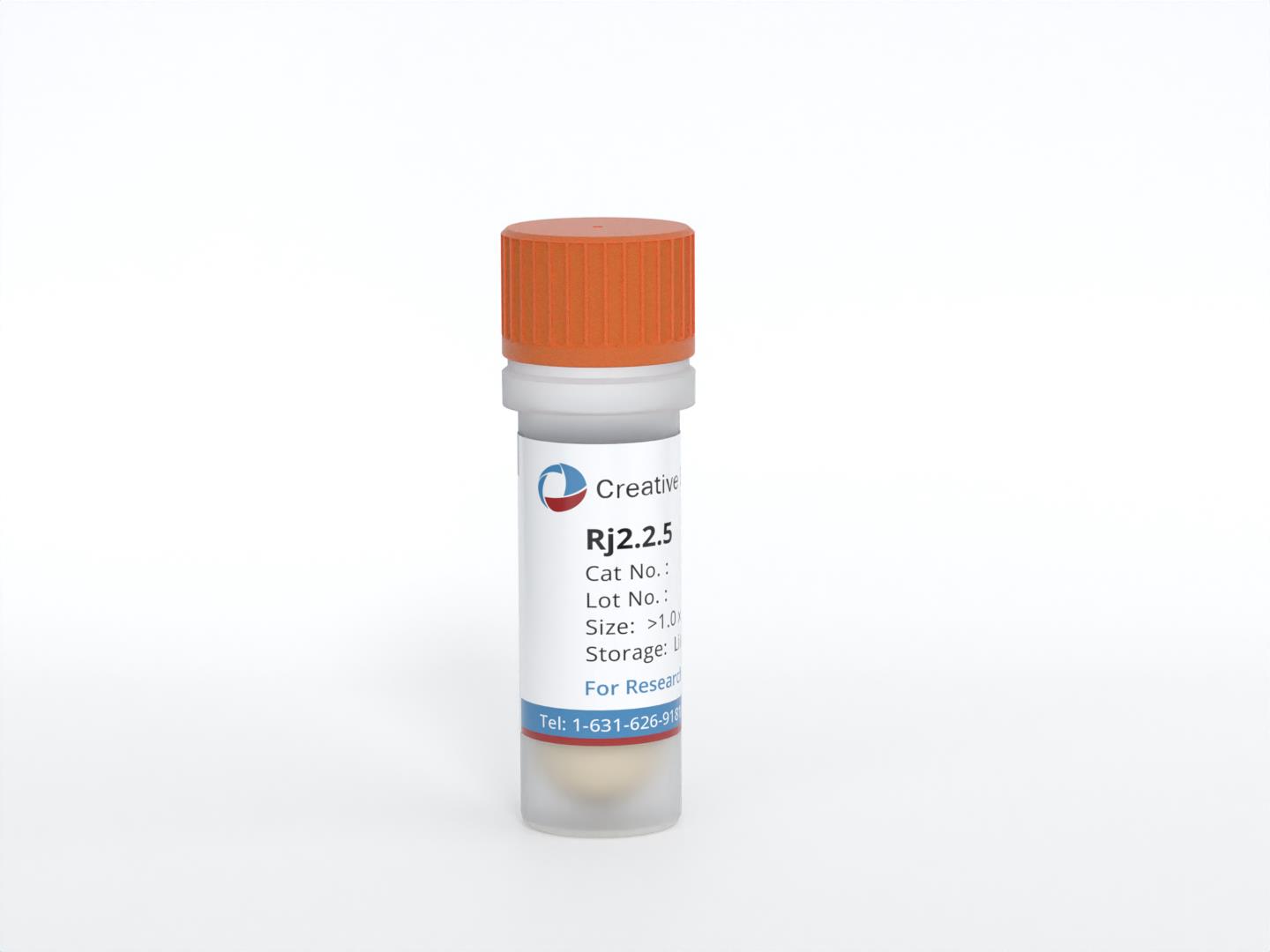Featured Products
Our Promise to You
Guaranteed product quality, expert customer support

ONLINE INQUIRY

SU-DHL-1
Cat.No.: CSC-C0409
Species: Human
Source: lymph node
Morphology: polymorphic cells growing in suspension, singly or in small clusters
Culture Properties: suspension
- Specification
- Background
- Scientific Data
- Q & A
- Customer Review
Cell type: anaplastic large cell lymphoma
Origin: established from the pleural effusion of a 10-year-old boy in 1973; original diagnosis was diffuse histiocytic lymphoma, corrected to diffuse large cell lymphoma (1984) and malignant histiocytosis (1989); according to REAL/WHO classification considered to represent an anaplastic large cell lymphoma (ALCL); described to carry the t(2;5)(p23;q35) NPM1-ALK (NPM-ALK) fusion gene
The SU-DHL-1 cell line was established in 1973 from the pleural effusion of a 10-year-old boy. According to the REAL/WHO classification, SU-DHL-1 cells are considered to represent an anaplastic large cell lymphoma (ALCL). This classification is significant as ALCL is a distinct type of non-Hodgkin lymphoma characterized by the proliferation of large, anaplastic cells. One of the defining characteristics of the SU-DHL-1 cell line is its genetic profile, particularly the presence of the t(2;5)(p23;q35) translocation, resulting in the NPM1-ALK (NPM-ALK) fusion gene. This genetic alteration is pivotal in the pathogenesis of ALCL, as the NPM-ALK fusion protein is an abnormal tyrosine kinase that promotes cell proliferation and survival, contributing to oncogenesis. The identification of this genetic hallmark has not only helped in understanding the biological behavior of ALCL but also in diagnosing the disease and developing targeted therapies.
The SU-DHL-1 cell line, with its unique genetic and pathological features, provides a critical tool for research in lymphoma. It offers invaluable insights into the mechanisms driving ALCL and serves as a vital resource for developing and testing new treatments targeting the NPM-ALK fusion gene. Through the study of this cell line, researchers continue to unravel the complexities of lymphatic cancers, paving the way for more effective and personalized approaches to treatment.
MoAbs Against SU-DHL-1 Cells Bind to Peripheral Blood Mononuclear Cells and Normal Lymphoid Tissues
Three murine monoclonal antibodies (MoAbs), named 2H9, 1E9, and 1A2, were produced after immunization of BALB/c mice with cells of the SU-DHL-1 cell line from a true histiocytic lymphoma. None of the three MoAbs reacted with B or T lymphocytes in the peripheral blood or lymphoid tissues such as lymph nodes, tonsils, and spleens. Antibodies 1E9 and 2H9 stained monocytes in peripheral blood. The former elicited an intracytoplasmic punctate reaction (Fig. 1A), whereas the latter produced nuclear membrane staining of variable intensity (Fig. 1D); 1E9 also reacted with the cytoplasm of granulocytes (Fig. 1A, arrow), whereas 1A2 did not react with either monocytes or granulocytes.
In normal lymphoid tissues, including tonsils and lymph nodes, 1E9 and 2H9 were very similar in their staining pattern; both reacted with the nuclear membranes of histiocytes and IR cells (Fig. 1B and E). This reactivity with IR cells was confirmed by examining lymph nodes from two patients with dermatopathic lymphadenitis, which contained abundant IR cells (Fig. 1C). Antibody 1A2 reacted only with rare cells scattered in the lymphoid tissue (Fig. 1F).
 Fig. 1 (A) 1E9 staining of a smear of a monocyte-enriched fraction of PBL, (B) a frozen section of a tonsil, and (C) a frozen section of a lymph node from a patient with dermatopathic lymphadenitis. (D) 2H9 staining of a smear of a monocyte-enriched fraction of PBL and (E) a frozen section of a tonsil. (F) 1A2 reacts with rare cells in a section of the tonsil. (Hsu SM, et al., 1986)
Fig. 1 (A) 1E9 staining of a smear of a monocyte-enriched fraction of PBL, (B) a frozen section of a tonsil, and (C) a frozen section of a lymph node from a patient with dermatopathic lymphadenitis. (D) 2H9 staining of a smear of a monocyte-enriched fraction of PBL and (E) a frozen section of a tonsil. (F) 1A2 reacts with rare cells in a section of the tonsil. (Hsu SM, et al., 1986)
NKILA Was a Tumor Suppressor lncRNA in SU-DHL-1 Cells
The long non-coding RNA (lncRNA) NKILA, localized to 20q13.31, is a negative regulator of NF-κB signaling implicated in carcinogenesis. As a CpG island is embedded in the promoter region of NKILA, it is hypothesized as a tumor suppressor lncRNA silenced by promoter DNA methylation in non-Hodgkin's lymphoma (NHL). The tumor suppressor function of NKILA in lymphoma was further explored by examining cell proliferation and cell death in SU-DHL-1 cells that were completely unmethylated for NKILA. The knockdown of NKILA led to a significantly increased cell proliferation rate compared with the control (Fig. 2A). Furthermore, the knockdown of NKILA resulted in reduced cell death in SU-DHL-1 cells (Fig. 2B). These results supportively indicated that NKILA acted as a tumor suppressor lncRNA in SU-DHL-1 cells.
 Fig. 2 NKILA suppresses cell growth and promotes cell death in SU-DHL-1. (Zhang MY, et al., 2022)
Fig. 2 NKILA suppresses cell growth and promotes cell death in SU-DHL-1. (Zhang MY, et al., 2022)
The universal stain for cytological preparations is the Papanicolaou stain. Harris' hematoxylin is the optimum nuclear stain and the combination of OG6 and EA50 gives a subtle range of green, blue, and pink hues to the cell cytoplasm.
The initial diagnosis was diffuse histiocytic lymphoma in 1973. In 1984, it was corrected to diffuse large cell lymphoma, and then to malignant histiocytosis in 1989. The current classification, according to the REAL/WHO system, considers the SU-DHL-1 cell line to represent anaplastic large cell lymphoma (ALCL).
The identification of the NPM-ALK fusion gene in SU-DHL-1 cells has facilitated the development of targeted therapies aimed at blocking the pathological tyrosine kinase activity of the NPM-ALK protein. By serving as a model system, SU-DHL-1 cells enable preclinical testing of ALK inhibitors, contributing significantly to the advancement of personalized medicine for ALCL patients.
Study of the SU-DHL-1 cell line presents challenges such as understanding the complex biology and variation within ALCL patients and overcoming resistance mechanisms to current therapies. However, it also offers opportunities to discover new therapeutic targets, unravel the disease's molecular basis, and improve diagnostic precision.
Ask a Question
Average Rating: 5.0 | 3 Scientist has reviewed this product
Detailed information
Creative Bioarray provides detailed information on sources and culture conditions and has given me many suggestions for experiments.
16 Jan 2023
Ease of use
After sales services
Value for money
In excellent condition
The cell line arrived in excellent condition, with high viability and purity, which is crucial for our sensitive experiments.
11 Feb 2024
Ease of use
After sales services
Value for money
A good experience
Working with Creative Bioarray has been a seamless experience, from order placement to technical support. Their professionalism and quality cell lines like SU-DHL-1 have made them a preferred vendor for our future needs.
12 May 2024
Ease of use
After sales services
Value for money
Write your own review
- You May Also Need







